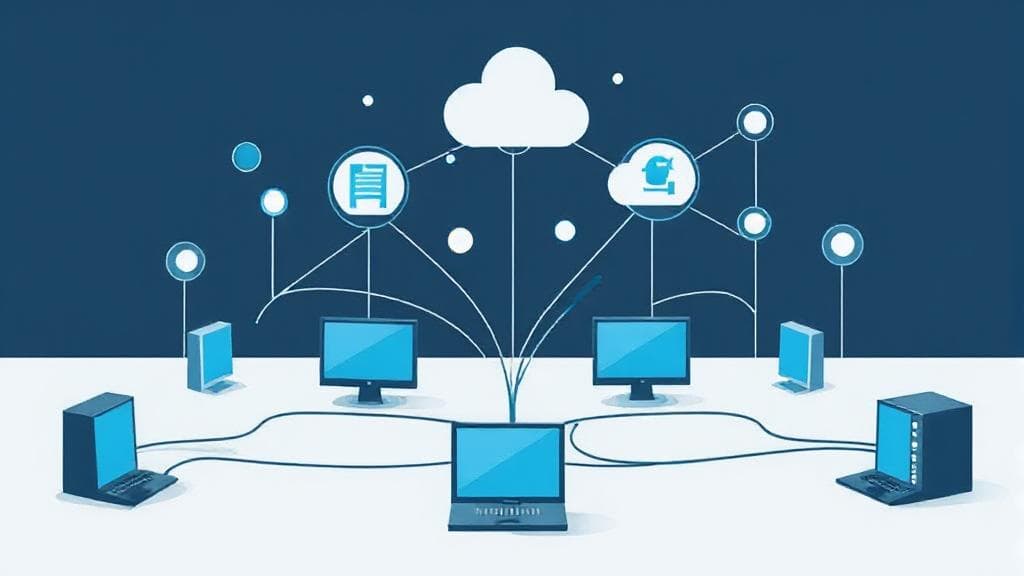What is a Local Area Network?
A Local Area Network (LAN) is a network that connects computers and devices within a limited geographical area, such as a home, school, or office building. Unlike Wide Area Networks (WANs), LANs operate at higher speeds, don't require expensive long-distance connections, and are confined to a smaller area, providing high-speed connectivity and efficient data transfer.
Key Characteristics
- Geographical Limitation: Typically confined to a single building or campus
- High Data Transfer Rates: LANs offer high-speed data transfer, often exceeding 1 Gbps
- Low Latency: Due to the proximity of devices, LANs experience minimal delay in data transmission
- Controlled Access: LANs are usually managed by a single organization, allowing for controlled access and security
Components of a LAN
Hardware Elements
- Network Interface Cards (NICs): Every connected device needs a NIC to communicate
- Switches: Direct traffic between devices on the network
- Routers: Connect the LAN to other networks, including the internet
- Cables: Usually Cat5e or Cat6 Ethernet cables for wired connections
- Wireless Access Points (WAPs): Used in wireless LANs to connect devices without cables
Network Protocols
The most common protocols used in modern LANs include:
- TCP/IP (Transmission Control Protocol/Internet Protocol)
- Ethernet
- Wi-Fi (802.11 standards)
Network Topologies
Different LAN configurations offer various advantages and drawbacks:
- Star Topology: The most common modern configuration, where all devices connect to a central switch or hub. Learn more about star topology
- Bus Topology: A single cable connects all devices sequentially
- Ring Topology: Devices are connected in a circular pattern
- Mesh Topology: Each device is connected to every other device
Types of LANs
1. Wired LANs
These use physical cables to connect devices. Wired LANs are known for their reliability and speed.
2. Wireless LANs (WLANs)
WLANs use wireless signals to connect devices. They offer flexibility and ease of installation but may be susceptible to interference.
3. Virtual LANs (VLANs)
VLANs are used to segment a physical LAN into multiple logical networks. This enhances security and improves traffic management.
Security Best Practices
Protecting your LAN is crucial in today's cyber threat landscape:
- Use strong passwords and authentication protocols
- Implement firewall software to block unauthorized access
- Use encryption (WPA3 for wireless networks)
- Regularly update firmware on network devices
- Monitor network traffic for suspicious activity
- Segment networks using VLANs_
Troubleshooting
When issues arise, follow these basic steps:
"The majority of network problems can be resolved by systematically checking each layer of the OSI model, starting from the physical layer." - Network Engineering Basics
- Check physical connections
- Verify IP address configuration
- Test connectivity using
pingortraceroute - Examine network logs
- Monitor resource usage
Future Trends
LANs continue to evolve with technology:
- Wi-Fi 6E and upcoming Wi-Fi 7 standards
- Increased adoption of Power over Ethernet (PoE)
- Software-defined networking (SDN)
- Integration with IoT devices
- Enhanced security protocols
For more detailed information about networking fundamentals, visit the CompTIA Network+ certification page or Cisco's Networking Basics.
